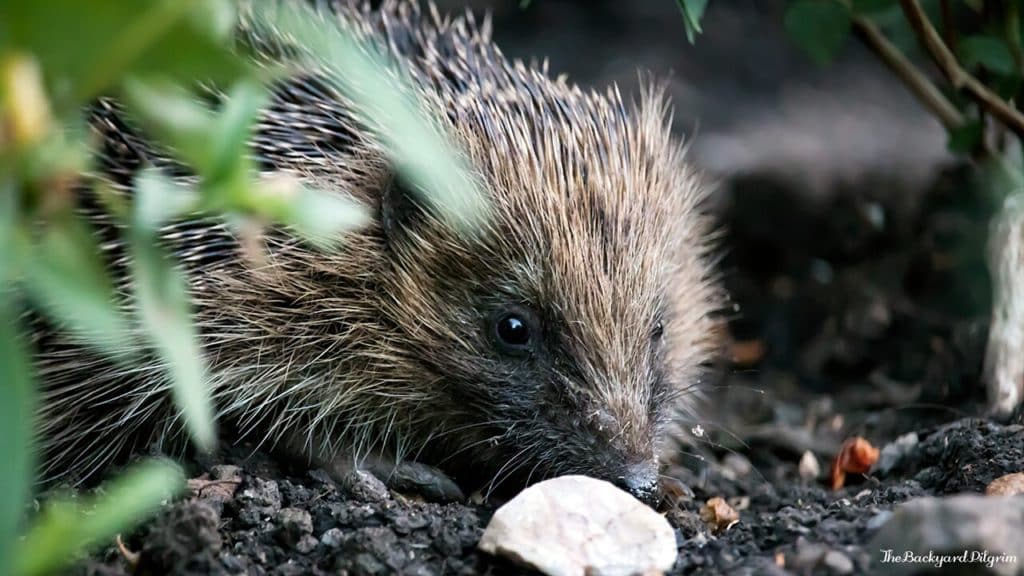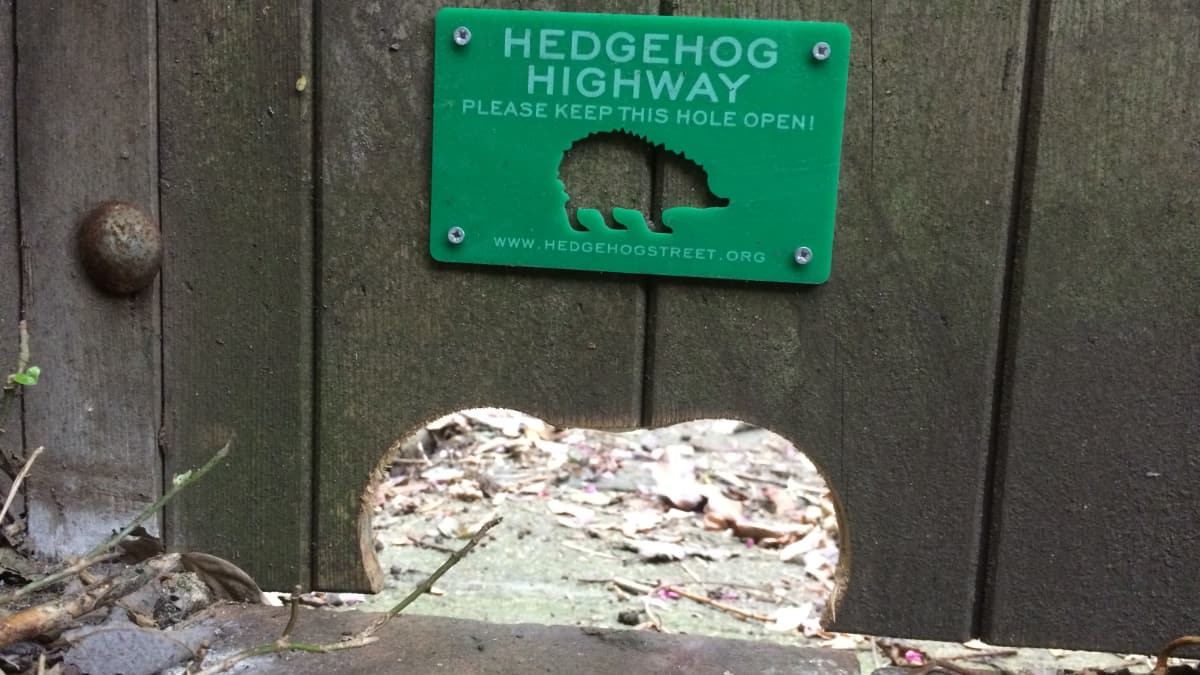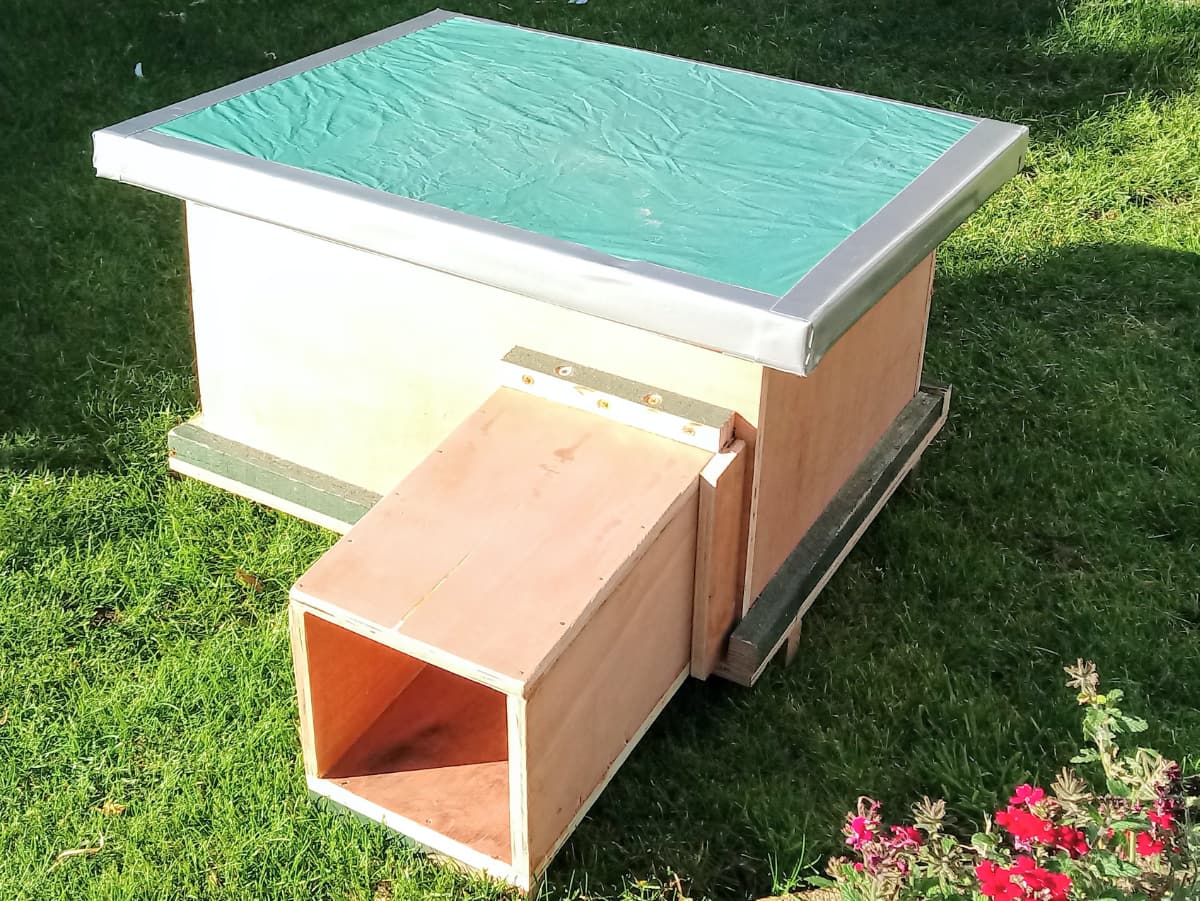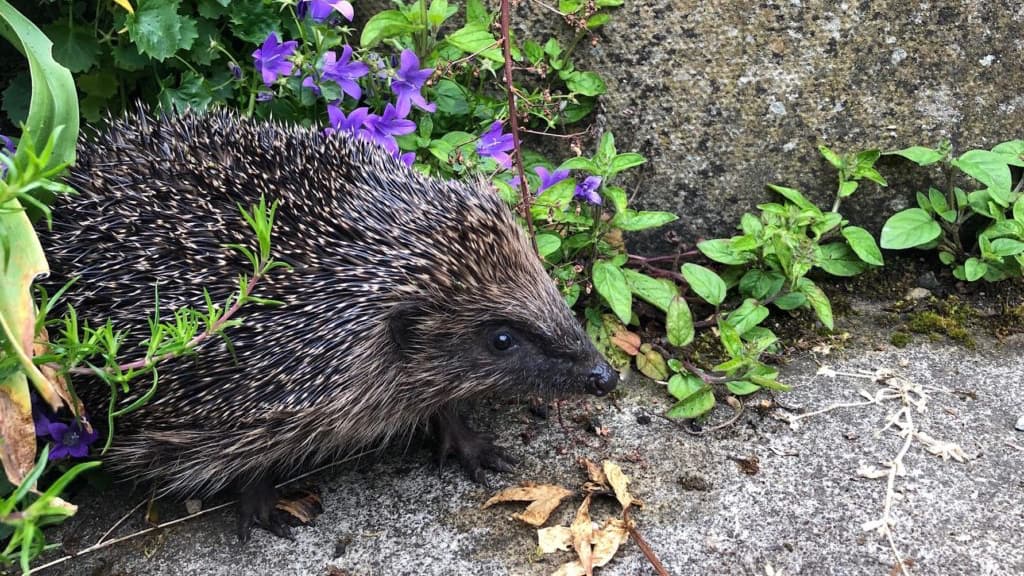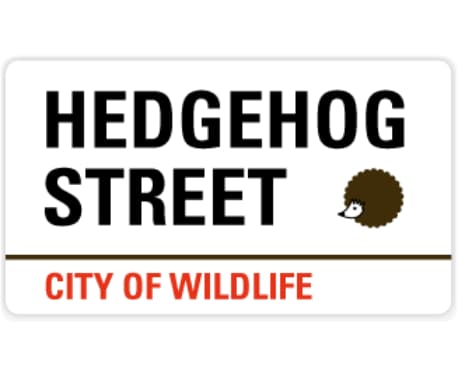Hedgehogs are a beloved part of UK wildlife and a welcome visitor to our gardens, but sadly our prickly guests are under threat. Since the millennium, we have lost half of rural hedgehogs and a third of our urban ones in the UK, as shown by a report compiled by People’s Trust for Endangered Species (PTES) and the British Hedgehog Preservation Society (BHPS). They face threats such as roadkill, lack of food and habitat destruction. In response to the worrying decline of hedgehogs, PTES and BHPS set up Hedgehog Street in 2011 to raise awareness of the plight of hedgehogs and reverse their decline. The good news is that there’s plenty we can all do to help; gardens are an extremely important resource for UK hedgehogs, offering food and shelter in urban and suburban areas. Here’s a few ideas for things you can do to help hedgehogs in your garden…
An important factor to consider is access; can hedgehogs actually get into your garden? Creating a ‘Hedgehog Highway’ will ensure that hedgehogs can move around their environment as much as they need to. Your highway should ideally be 13cm x 13cm, roughly the size of a CD case, and can be through or under a fence or boundary. Hedgehogs can travel an average of 2km in a single night in search of food and shelter so linking as many gardens together as possible is vital. Ensuring access between front and back gardens is also important.
Leaving a corner of the garden overgrown and undisturbed is another way to help, as this offers a safe haven for hedgehogs and other wildlife too. As well as shelter, this will provide nourishment; a hedgehog’s natural diet consists of creepy crawlies like beetles, worms and slugs, which will thrive in a ‘wild patch’ of the garden. You could also think about installing a hedgehog house; these can be purchased online or you can even build your own using a plan from the Hedgehog Street website.
Depending on resources in your garden, log, leaf and compost piles also provide plenty of natural food for hedgehogs, as well as shelter and nesting materials. Much like the ‘wild corner’ of the garden, this is a simple and cheap way to help hedgehogs. So, before filling up your garden waste bin, think about creating a feature that lots of wildlife will benefit from.
Garden ponds are also useful for hedgehogs as they provide a year round drinking source and attract insect prey. For hedgehog safety, ponds should have sloping sides or an escape ramp; hedgehogs are strong swimmers but can become trapped in ponds if they have steep, high sides.
Increasing natural hedgehog food availability in your garden will be hugely beneficial, but you can also leave supplementary food out for them. Meaty cat or dog food can be purchased easily and is gratefully received, along with a shallow dish of water. Creating a feeding station using an upturned plastic box with a small entrance hole cut in will ensure that your hedgehog feast isn’t stolen by pets.
Once you’ve got some visiting hedgehogs you could go one step further and install a wildlife camera, to give you insights into their hidden nocturnal world. You can also check out other peoples videos online.
Encouraging hedgehogs into your garden is a great way to help local populations, but it’s important to be mindful when gardening as hidden hedgehogs may sustain injuries from strimmers, mowers and pitchforks. Sadly, this spring wildlife rehabilitators are already reporting a high number of accidental hedgehog injuries and fatalities from garden equipment, so do take care! Chemical treatment of gardens also poses a threat, so organic gardening is recommended.
By making as many of these changes in your garden as possible you’ll be helping local hedgehogs as well as other struggling wildlife.

